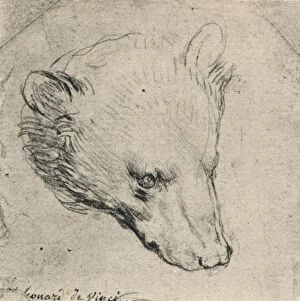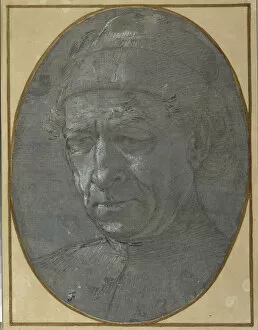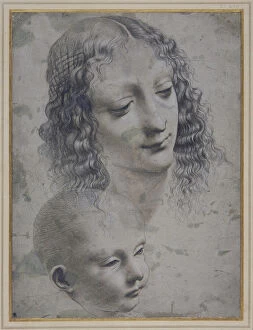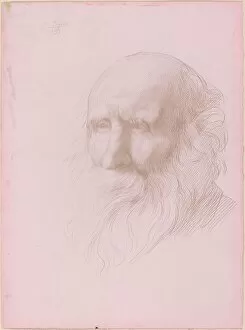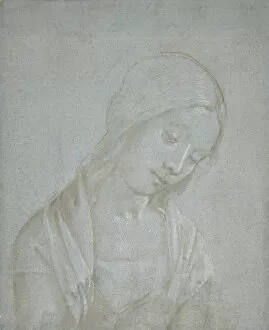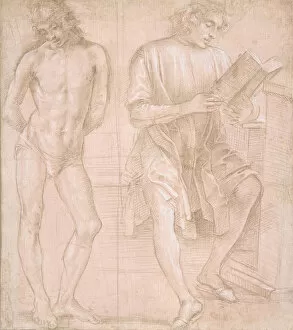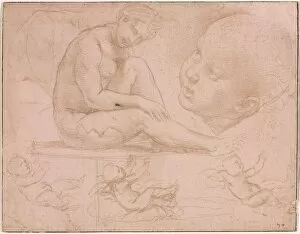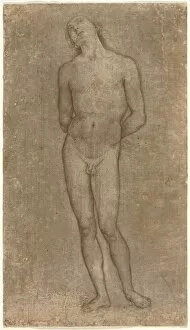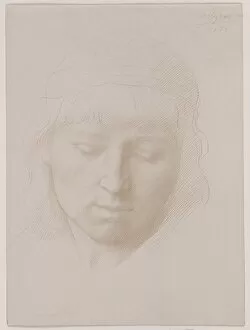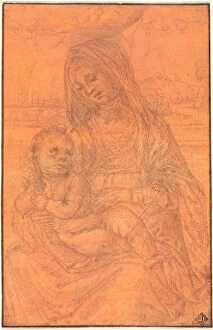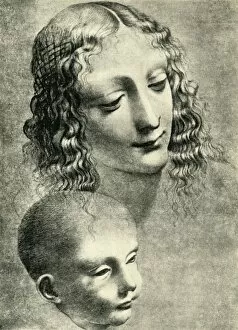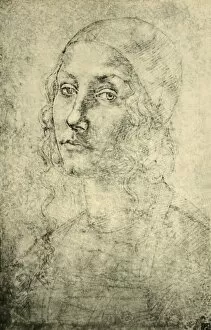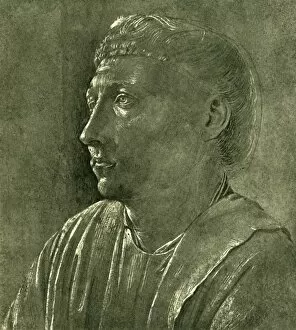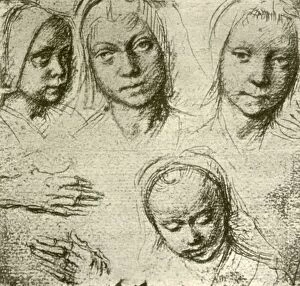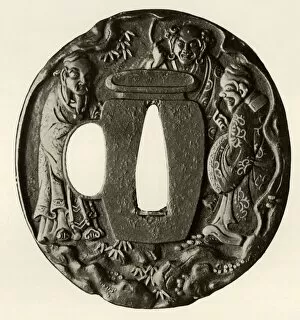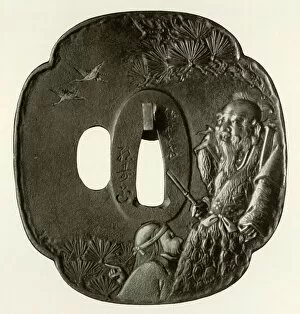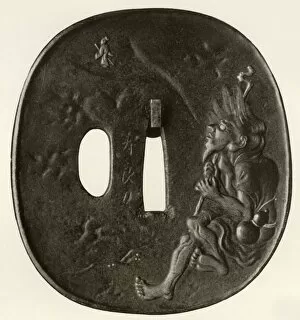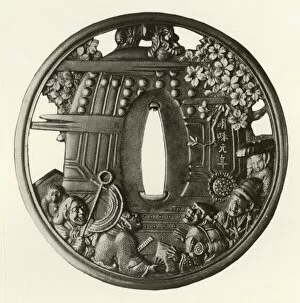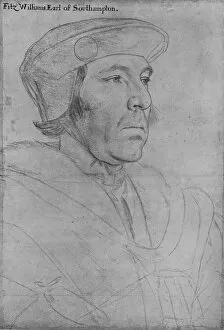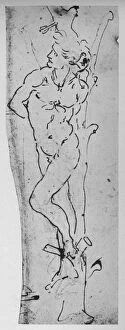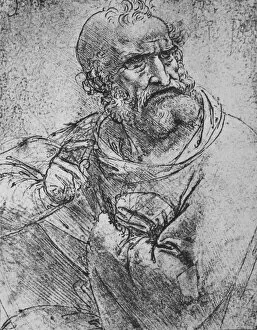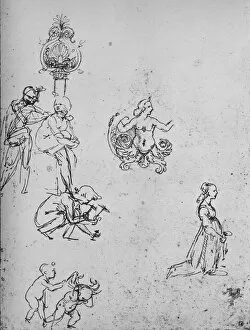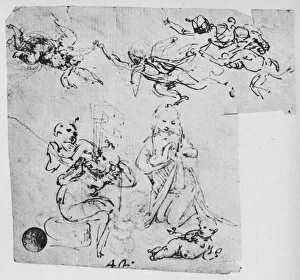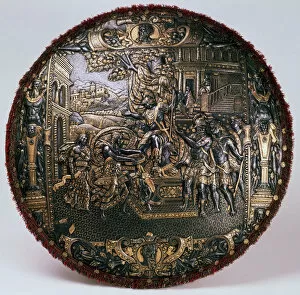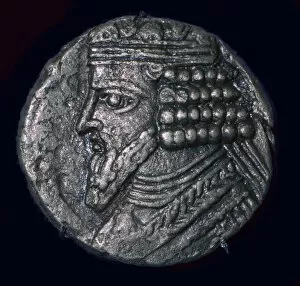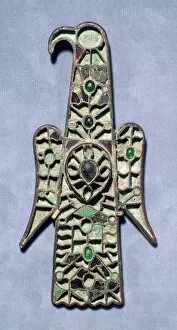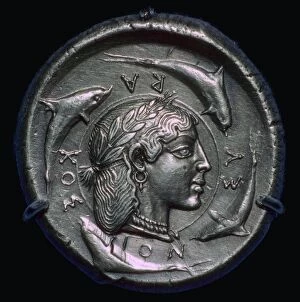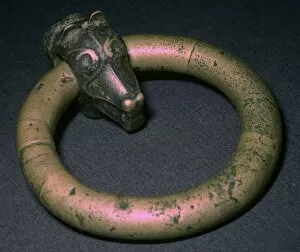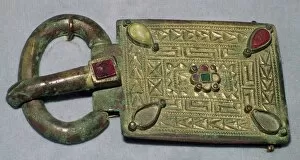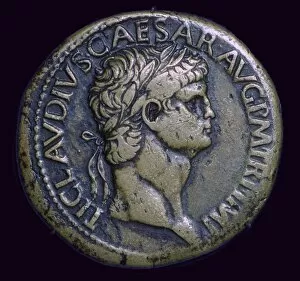Metalpoint Collection
"Exploring the Timeless Artistry of Metalpoint: A Glimpse into History and Creativity" Metalpoint, an ancient drawing technique dating back centuries
All Professionally Made to Order for Quick Shipping
"Exploring the Timeless Artistry of Metalpoint: A Glimpse into History and Creativity" Metalpoint, an ancient drawing technique dating back centuries, continues to captivate artists and art enthusiasts alike. This captivating medium allows for intricate details and delicate lines that bring artworks to life. Leonardo da Vinci's "Head of a Bear, c1480 (1945)" showcases his mastery in metalpoint, capturing the ferocity and strength of this majestic creature with remarkable precision. The silver Viking disc-brooch imitating a Byzantine coin from York reveals the versatility as it adorns jewelry with intricate designs, blending history and craftsmanship seamlessly. In Alphonse Legros' "Head of an Old Man, " we witness the artist's skillful use of metal-point on bluish grey prepared paper to portray every wrinkle and expression etched upon the elderly man's face. Similarly, Legros' "Study of Cupid (Head of a Girl)" captures youthful innocence through delicate strokes on grey prepared paper. The softness in texture brings out the tender emotions hidden within this portrait. Minerva stands tall in all her glory in another metalpoint masterpiece. With her shield held firmly in her left hand and lance poised confidently in her right, she embodies strength personified. "Pearl, " created using metalpoint heightened with white and yellow accents along with scratching techniques, exemplifies how this medium can create luminosity that adds depth to any artwork. Alphonse Legros further demonstrates his talent with his self-portrait from 1895. Through meticulous rendering using metal-point techniques, he immortalizes himself while showcasing his artistic prowess. Piero di Cosimo's attributed work "Bust of a Young Woman" transports us back to Renaissance times as we marvel at its lifelike qualities achieved through precise metal-point strokes. Lastly, two distinct pieces by Alphonse Legros capture the essence of youth and knowledge.

